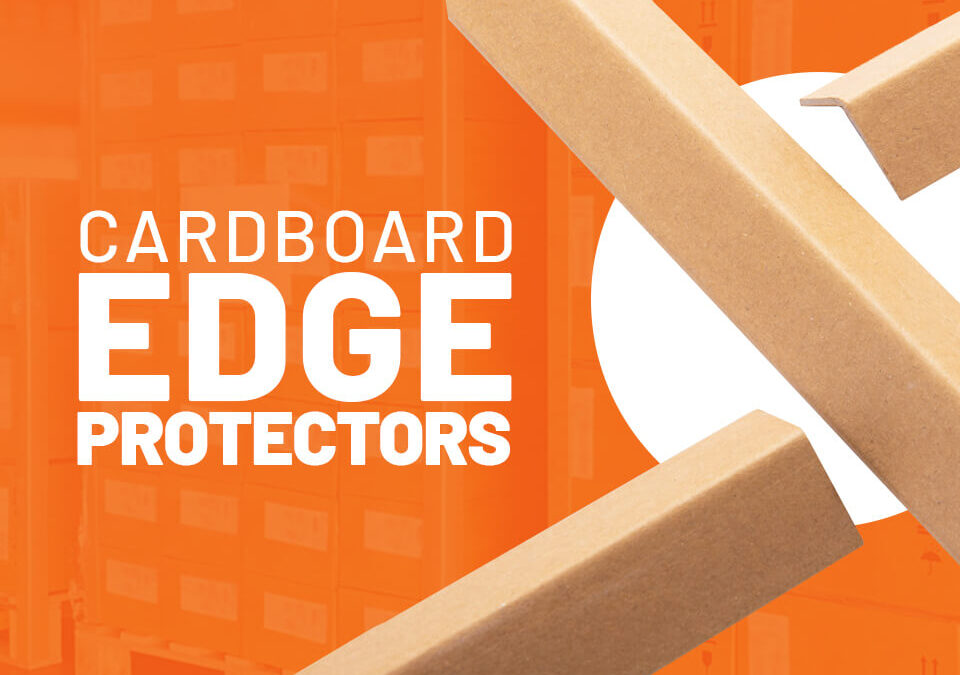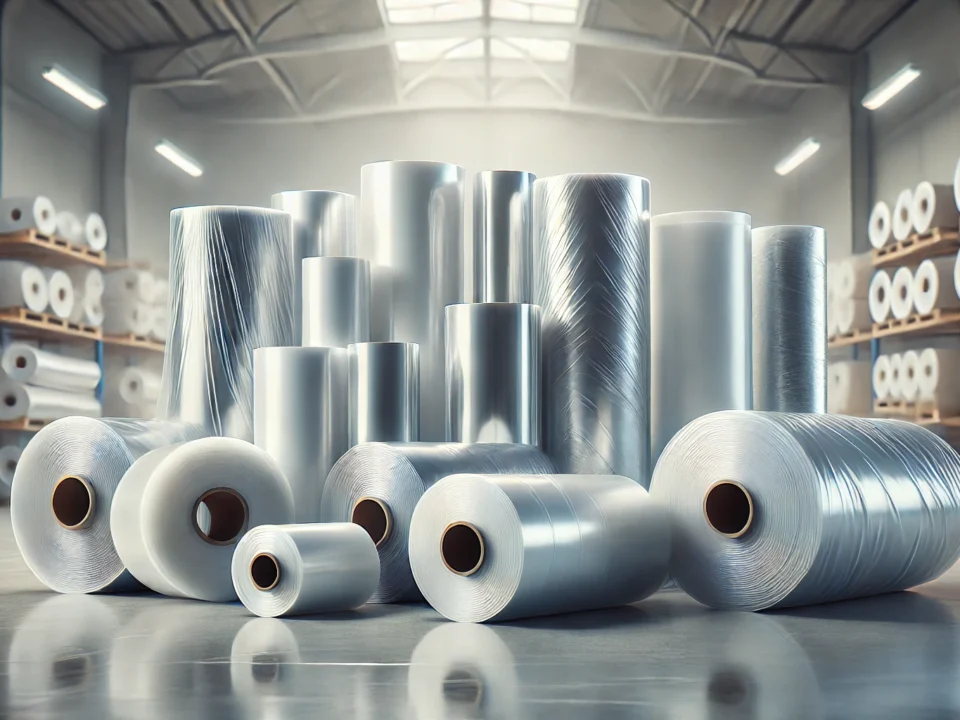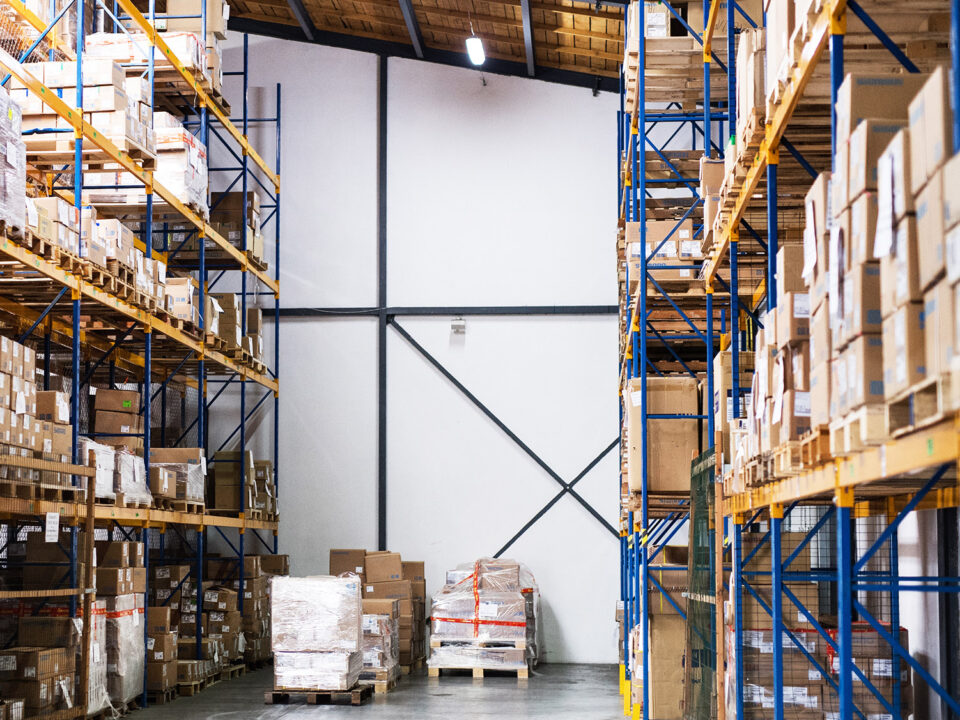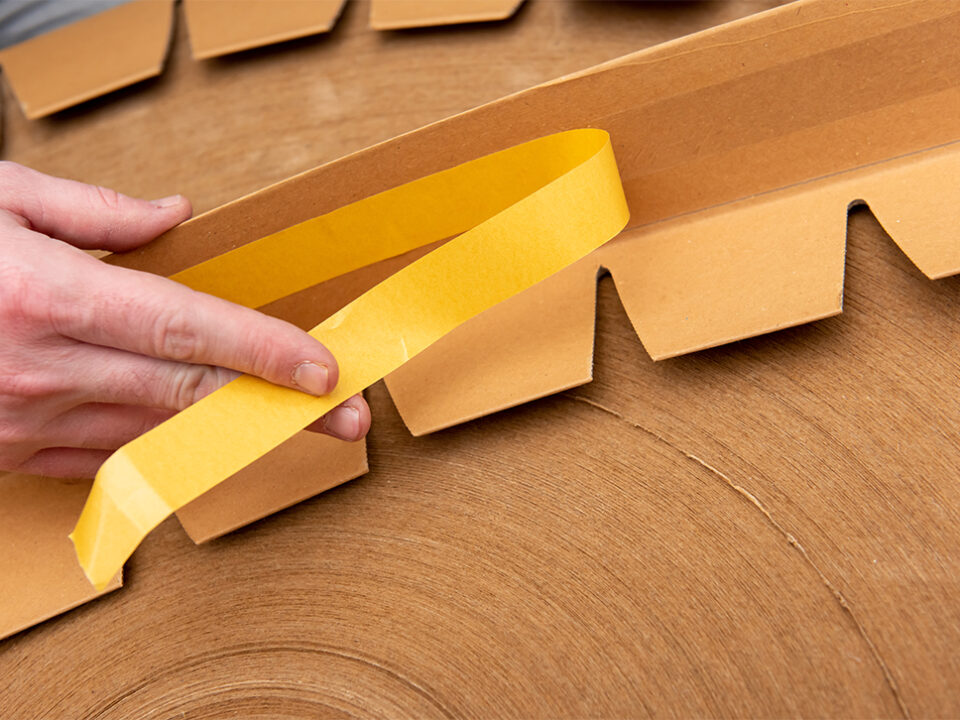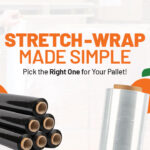
Stretch Wrap Made Simple: Pick the Right One for Your Pallet
September 17, 2025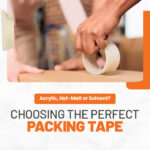
Acrylic, Hot-Melt or Solvent? Choosing the Perfect Packing Tape for UK Warehouses
October 21, 2025
Cardboard edge protectors are thick strips placed on box or pallet corners to stop crushing and tearing. They help prevent transit damage packaging by adding strength to weak spots. Commonly used across the UK, these cardboard edge protectors UK come in many sizes and are also called pallet corner boards or edge boards.
Cardboard edge protectors do the following:
- Keep corners from getting bent or crushed during movement
- Help boxes stay stacked in place without sliding or leaning
- Spread pressure from straps or film across a wider area (GOV.UK – DVSA load securing guidance)
- Help stop damage from bumps or drops during handling or transport
This is why cardboard edge protectors UK companies use them across warehouses, factories, and shipping centers. They work across many industries and adapt to different packaging setups. You can find different types of Cardboard Edge Protectors made for various needs.
Why Transit Damage Happens
Boxes often get damaged during shipping. They can shift, tip, or slide on rough roads. Forklifts may bump them, and tight straps can cut into soft edges. Stacked boxes can rub or crush each other. Even small knocks can tear corners and put the items inside at risk
Edge damage is one of the first signs of weak packaging. It can lead to:
- Crushed corners that weaken box strength
- Torn or ripped outer boxes that expose items inside
- Broken items inside from shock or shifting
- Collapsed pallet loads if one part of the stack gives way
Once the edge fails, the rest of the box may follow. Cardboard edge protectors slow this down. They form a barrier that protects from knocks, pressure, and bending, helping the packaging hold up better during the trip.
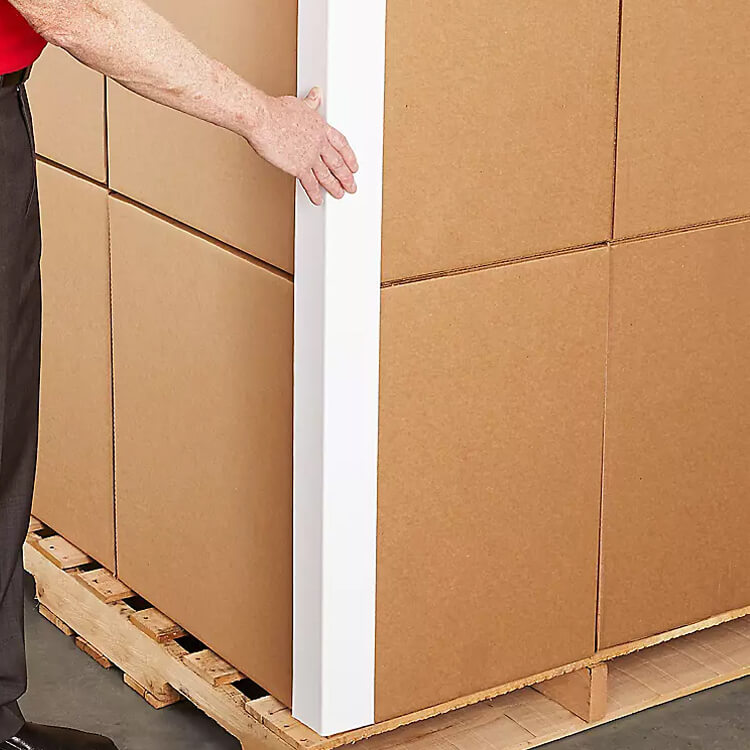
How Cardboard Edge Protectors Help With Damage
Cardboard edge protectors keep corners strong and steady. They hold the shape of the box, even when wrapped or strapped. This means you can stack items on a pallet without boxes collapsing or slipping from pressure. They help goods survive the full trip, even with long distances or several stops.
They help:
- Spread force from stretch wrap or plastic straps to avoid sharp pressure points
- Make stacked boxes more even by keeping corners aligned
- Add grip for straps so they don’t slip out of place
- Act as a shock absorber during bumps and hits
You will see fewer crushed packages when you use cardboard edge protectors. Pallets stay neater. Loads stay upright. This is a good way to prevent transit damage packaging issues and avoid extra work or costs.
These protectors are made to reduce corner impacts and protect the whole package during shipping. They help keep pallets stable and safe by adding strong support to the outer edges.
Reducing the Need for Plastic Strapping
Plastic strapping holds loads tight, but it can cause problems. If too tight, it cuts boxes. If too loose, loads can shift or spill. Cardboard edge protectors help by keeping loads stable, so you don’t need to strap as tight. This means safer packing with less damage
Benefits include:
- Less plastic waste in the packing process
- Less damage from strapping on soft or weak corners
- More grip without cutting into cardboard or causing dents
- Better hold with fewer straps or wraps needed overall
Using cardboard edge protectors means you can wrap loads without hurting the package. It makes strapping easier and safer for both people and products.
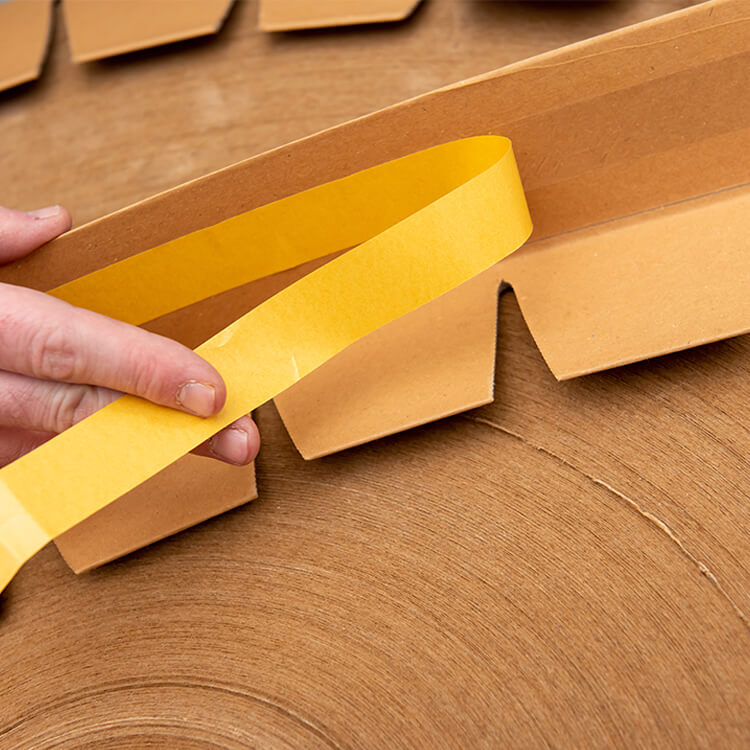
Common Types of Cardboard Edge Protectors
There are a few main styles of cardboard edge protectors. Each type works for a different job. You can match the shape and coating to the kind of product or condition you deal with.
Here are the most used types:
Standard Edge Protectors
- Flat and firm, made to suit most packages
- Used on straight corners and flat surfaces
- Good for most loads from general goods to retail boxes
Moisture-Resistant Edge Protectors
- Have a coat that blocks water from soaking the board
- Used in cold stores, freezers, or damp places
- Hold shape even when wet or humid for long trips
Locking Edge Protectors
- Fit tightly and stay in place, even during movement
- Used for heavy or machine-wrapped loads that shift a lot
- Helpful for faster lines and auto-wrap stations
Curved Edge Protectors
- Shaped to fit round items like rolls, pipes, or drums
- Used for pipes, tubes, or soft corners that don’t have flat edges
Self-Adhesive Edge Protectors
- Stick to the box and stay fixed while wrapping
- Do not move during packing or loading
- Good for fast-paced packing lines or light goods
Orange Packaging offers all of these types of cardboard edge protectors. They are made to be cost-saving, simple to use, and better for the planet. Their edge boards suit many job types and can be used on the inner or outer layer of packaging.
Better Stability on Pallets
Pallets need to stay firm and upright. A wobbly pallet can fall, shift, or break during shipping. That leads to broken products and wasted time. Cardboard edge protectors help keep pallets steady by holding everything in place from the outside.
They help by:
- Holding corners in line to stop leaning or sliding
- Spreading pressure from top to bottom for balanced loads
- Giving support to all four sides so layers stay even and flat
If you use pallet corner boards, your load stays straight. Boxes don’t slide or lean. You need fewer straps or film layers. This cuts packing time and lowers costs while making shipping safer.
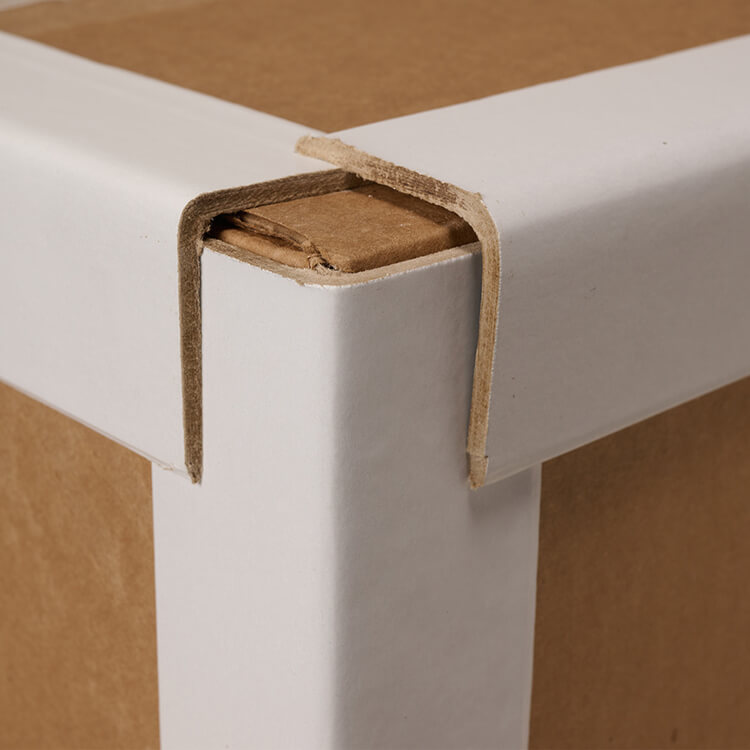
Cardboard vs Plastic Edge Guards
Some people use plastic edge guards. These are hard and strong. But they have downsides. They cost more and are harder to recycle. They also need cleaning if reused, which adds time and labor.
Cardboard edge protectors are different:
- Made from recycled paper and reused board
- Easier to reuse or recycle in most local systems
- Break down naturally without leaving plastic waste
- Lower cost for large jobs or repeat orders
For most loads, cardboard is enough. You don’t need plastic unless carrying sharp or wet goods. Cardboard is softer, lighter, and easier to use for daily tasks.
Helps All Kinds of Businesses
Cardboard edge protectors work for many jobs and setups. Small shops, large makers, online sellers, and transport firms all use them. They are easy to fit into current systems without changes to machines or steps.
Good for:
- Shipping fragile goods like glass or ceramics
- Storing heavy boxes that are stacked high
- Holding stacked goods in place during transport
- Lowering packaging waste without raising risk
No need for new machines. These boards fit in by hand or with simple tools. You can use them with your current wrap, tape, or straps. They’re quick to learn and easy to add into the packing process.
Saving Money on Damaged Goods
Every broken box costs money. You lose time, labor, and goods. That adds up fast, especially for big orders or long shipments.
Cardboard edge protectors help lower this risk. Boxes stay in shape. Goods inside are less likely to break. That means fewer returns and fewer complaints from customers or shops.
Saving from:
- Less breakage during shipping and handling
- Less packing time and rework needed after damage
- Less waste from crushed boxes that must be replaced
This makes packing more steady and helps avoid loss. It also makes workers’ jobs easier and speeds up the whole line.
Who Uses Them in the UK?
Many companies in the UK use cardboard edge protectors UK wide. From food to electronics, many goods need care during travel. Pallet corner boards are used in places like:
- Warehouses handling daily shipments
- Transport hubs where goods change hands
- Distribution centers for large retailers
- Retail packers for home delivery orders
The tools are small, but the help they give is big. They play a key role in keeping goods safe on the move and making sure packaging stays strong all the way through.
Summary
Cardboard edge protectors help stop damage during travel. They support corners, lower waste, and reduce the need for strong strapping. Boxes stay safe and upright. Pallets stay tight and neat without extra work.
When loads arrive in good shape, everyone wins. Shippers save money. Workers save time. And goods reach customers in one piece without needing repair or return.
If your boxes bend, shift, or tear during transit, try using edge boards. They’re simple, low-cost, and ready to use. They work well with stretch wrap, straps, and pallets of all sizes.







